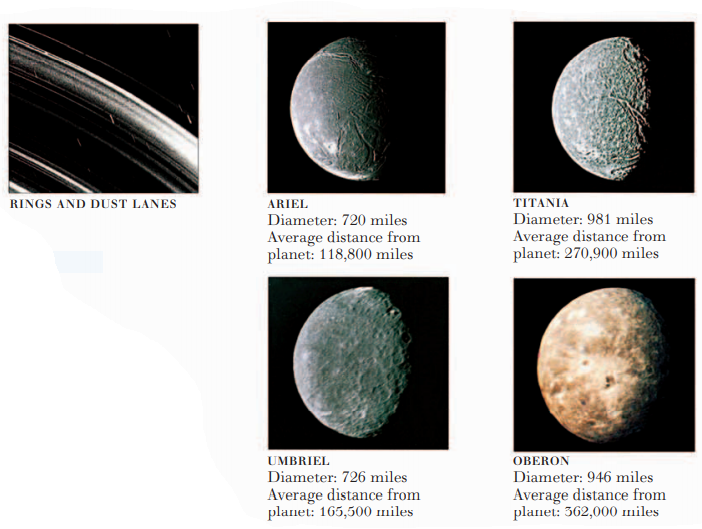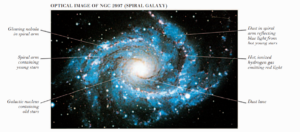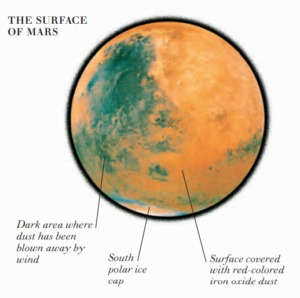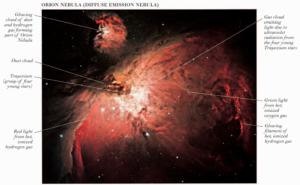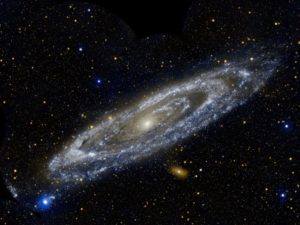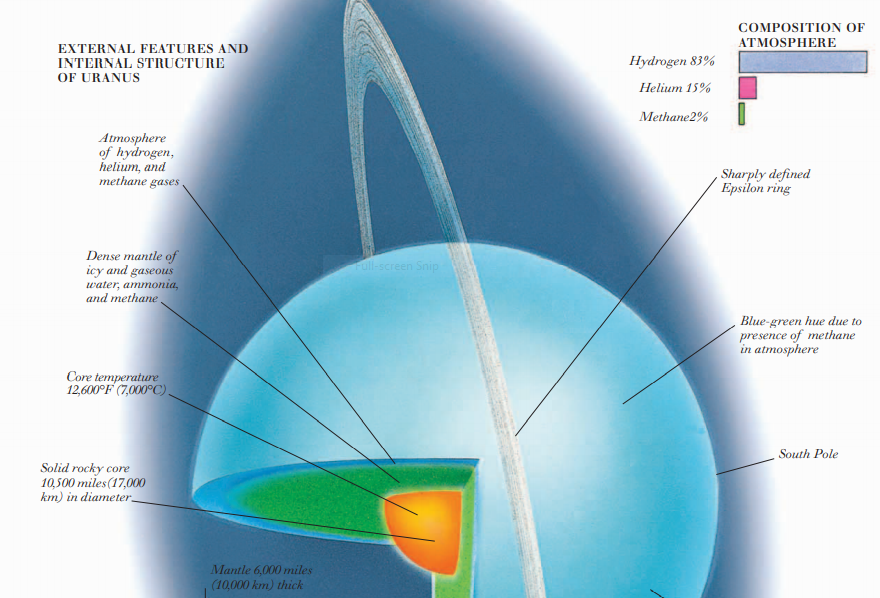
URANUS IS THE SEVENTH PLANET from the Sun and the third-largest, with a diameter of about 32,000 miles (51,000 km). It is thought to consist of a dense mixture of different types of ice and gas around a solid core. Its atmosphere contains traces of methane, giving the planet a blue-green hue, and the temperature at the cloud tops are about -350°F (-210°C).

Uranus is the most featureless planet to have been closely observed: only a few icy clouds of methane have been seen so far. Uranus is unique among the planets in that its axis of rotation lies close to its orbital plane. As a result of its strongly tilted rotational axis, Uranus rolls on its side along its orbital path around the Sun, whereas other planets spin more or less upright. Uranus is encircled by main rings that consist of rocks interspersed with dust lanes and two distant outer rings made of dust.

The rings contain some of the darkest matter in the solar system and are extremely narrow, making them difficult to detect: most of them are less than 6 miles (10 km) wide, whereas most of Saturn’s rings are thousands of miles in width. There are 27 known Uranian moons, all of which are icy and most of which are farther out than the rings. The 13 inner moons are small and dark, with diameters of less than 100 miles (160 km), and the five major moons are between about 290 and 1,000 miles (470 and 1,600 km) in diameter. The major moons have a wide variety of surface features. Miranda has the most varied surface, with cratered areas broken up by huge ridges and cliffs 12 miles (20 km) high. Beyond these are nine much more distant moons with diameters less than 90 miles (150 km).


